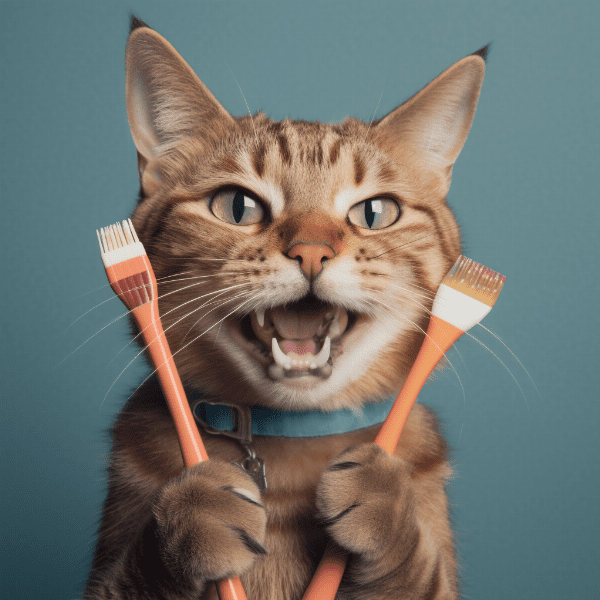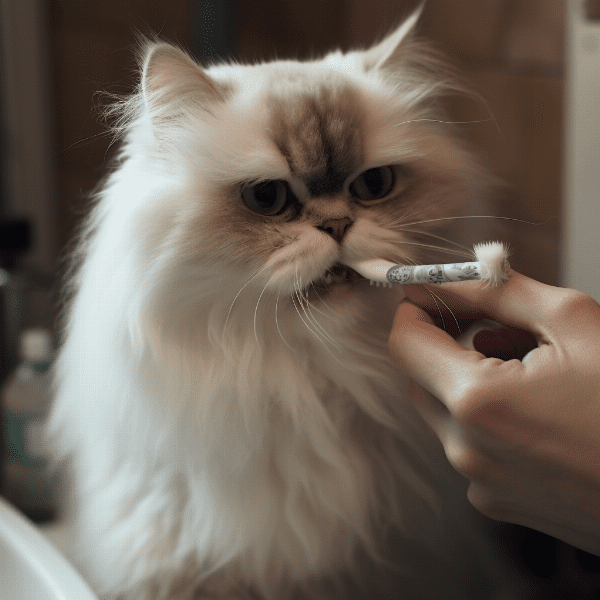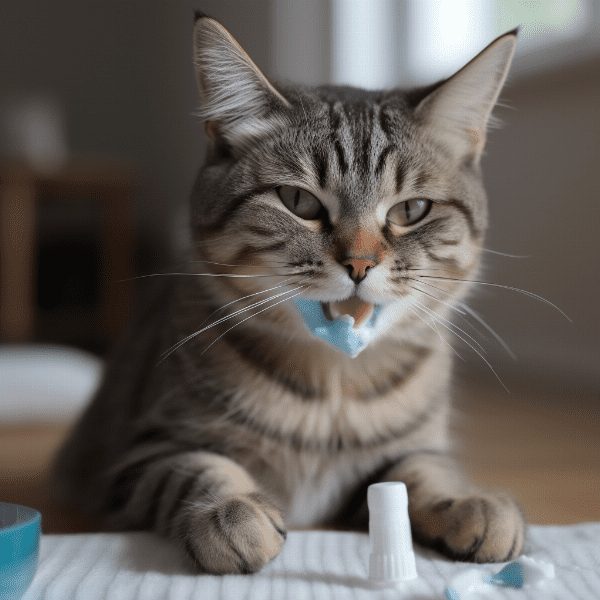Table of Contents
- Introduction: Meet the Crying Cat
- Understanding the Importance of Dental Health for Cats
- Preparing for Brushing: Tools and Techniques
- Step-by-Step Guide to Brushing Your Cat’s Teeth
- What to Do If Your Cat Cries During Brushing
- Troubleshooting: Common Problems and Solutions
- Tips for Maintaining Your Cat’s Dental Health
- When to See a Veterinarian
- Conclusion: Happy and Healthy Smiles for Your Feline Friend
Introduction: Meet the Crying Cat
If you’re a cat owner, you may have experienced the challenge of trying to brush your furry friend’s teeth. Cats are notorious for their resistance to dental care, and the process can be especially difficult if your cat is prone to crying or whining. But don’t worry – you’re not alone. In this guide, we’ll introduce you to the crying cat and offer tips for successfully brushing your cat’s teeth while minimizing distress.
The Crying Cat: What You Need to Know
First, let’s talk about why your cat might be crying during tooth brushing. For some cats, the process can be uncomfortable or even painful, especially if they have dental problems or gum disease. In other cases, your cat may simply be anxious or stressed by the experience.
Whatever the cause, it’s important to approach tooth brushing with patience and care. This may mean taking extra time to acclimate your cat to the process, or seeking professional help from a veterinarian or animal behaviorist.
Why Brushing Your Cat’s Teeth is Important
It’s no secret that dental health is important for cats (and humans, too!). Without proper care, your cat’s teeth and gums can develop a range of problems, from cavities to periodontal disease. In severe cases, dental problems can even lead to serious health issues, such as heart disease or kidney failure.
By incorporating regular tooth brushing into your cat’s routine, you can help prevent these problems and promote overall health and well-being. Plus, with a little patience and practice, tooth brushing can become a positive experience for you and your cat alike.
In the next sections, we’ll provide tips and guidance for making tooth brushing a success, even with a crying cat.

Understanding the Importance of Dental Health for Cats
As a cat owner, you know that keeping your feline friend healthy is a top priority. But did you know that dental health plays a crucial role in overall wellness?
The Risks of Poor Dental Health
Without proper care, your cat’s teeth and gums can develop a range of problems. These may include:
- Tartar buildup: Over time, bacteria in your cat’s mouth can form a hard, yellowish substance called tartar. Tartar buildup can lead to gum disease and tooth decay.
- Gingivitis: This is a type of gum disease that causes inflammation and redness in the gums. Symptoms may include bleeding or swollen gums, bad breath, and difficulty eating.
- Periodontal disease: This is a more severe form of gum disease that can cause damage to the tissues and bones that support the teeth. In addition to the symptoms of gingivitis, cats with periodontal disease may experience loose teeth or even tooth loss.
- Other health problems: In severe cases, dental problems can lead to systemic health issues, such as heart or kidney disease.
The Benefits of Good Dental Health
On the other hand, good dental health can provide a range of benefits for your cat. These may include:
- Better breath: Brushing your cat’s teeth can help freshen their breath and eliminate unpleasant odors.
- Reduced risk of dental problems: By removing bacteria and debris from your cat’s mouth, you can help prevent tartar buildup and other dental problems.
- Improved overall health: Studies have shown that good dental health can have a positive impact on overall wellness, helping to prevent a range of health issues.
In the next sections, we’ll provide tips and guidance for keeping your cat’s teeth and gums healthy and strong.

Preparing for Brushing: Tools and Techniques
Before you start brushing your cat’s teeth, it’s important to gather the right tools and set the stage for success. In this section, we’ll cover everything you need to know to get started.
Tools for Brushing Your Cat’s Teeth
To get started with brushing, you’ll need a few key tools:
- A toothbrush: Look for a soft-bristled brush that’s specifically designed for cats. You may also consider a finger brush, which fits over your finger and can be easier to use.
- Toothpaste: Never use human toothpaste on your cat, as it can be harmful if ingested. Instead, look for a cat-specific toothpaste that’s formulated to be safe and tasty for your furry friend.
Techniques for Preparing Your Cat
Before you start brushing, it’s important to help your cat feel comfortable and at ease. Here are a few techniques to try:
- Start slow: If your cat isn’t used to tooth brushing, start by simply getting them comfortable with having their mouth touched. Offer treats or praise to help them associate the experience with positive feelings.
- Introduce the toothbrush: Once your cat is comfortable with having their mouth touched, introduce the toothbrush or finger brush. Allow them to sniff and investigate it, and offer praise and treats for positive interactions.
- Practice, practice, practice: With patience and practice, your cat can learn to associate tooth brushing with positive experiences. Start by brushing for just a few seconds at a time, gradually building up to longer sessions.
In the next sections, we’ll provide step-by-step guidance for actually brushing your cat’s teeth, as well as tips for troubleshooting common issues that may arise.
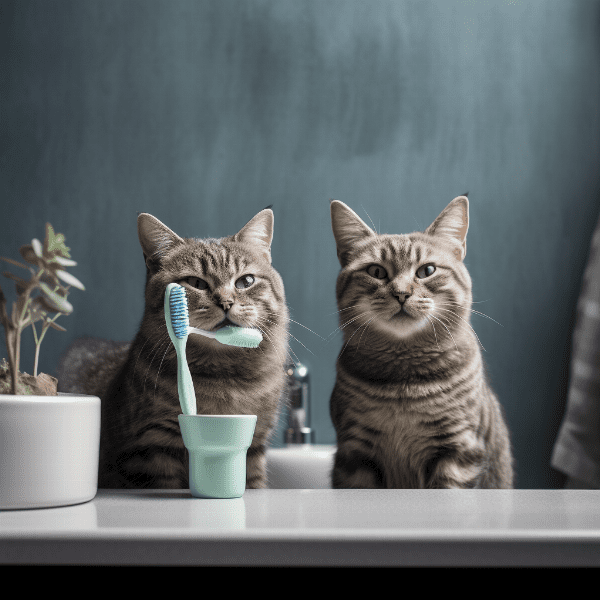
Step-by-Step Guide to Brushing Your Cat’s Teeth
Now that you’re prepared with the right tools and techniques, it’s time to start brushing your cat’s teeth. Follow these step-by-step instructions to get started.
Step 1: Get Your Cat Comfortable
Before you begin brushing, make sure your cat is calm and relaxed. Offer treats or playtime to help them associate the experience with positive feelings. You may also want to have someone hold your cat or use a towel to help keep them still.
Step 2: Introduce the Toothpaste
Squeeze a small amount of toothpaste onto the brush or your finger brush, and allow your cat to lick it off. This can help them become familiar with the taste and texture of the toothpaste.
Step 3: Start Brushing
Gently lift your cat’s lip to expose their teeth, and begin brushing in a circular motion. Focus on the outside of the teeth, where plaque and tartar tend to build up. Be sure to work gently and take breaks if your cat becomes uncomfortable or agitated.
Step 4: Rinse and Reward
Once you’ve finished brushing, rinse your cat’s mouth with water or a pet-safe mouth rinse. Then, offer plenty of praise and treats to help your cat associate the experience with positive feelings.
Tips for Success
Here are a few additional tips to help make tooth brushing a success:
- Be consistent: Try to brush your cat’s teeth at the same time each day, and make it a regular part of their routine.
- Take it slow: Don’t rush the process – it may take several weeks or even months for your cat to become comfortable with tooth brushing.
- Be patient: Your cat may cry or resist at first, but with patience and practice, they can learn to tolerate and even enjoy tooth brushing.

What to Do If Your Cat Cries During Brushing
It’s not uncommon for cats to cry or whine during tooth brushing, especially if they’re not used to the process. However, there are steps you can take to help minimize distress and make the experience more comfortable for your furry friend.
Identify the Cause of the Crying
First, try to identify the cause of your cat’s crying. Are they experiencing pain or discomfort during brushing? Or are they simply anxious or stressed by the experience?
If your cat is experiencing pain or discomfort, it’s important to address the issue with your veterinarian. They may recommend a dental exam or treatment to address any underlying issues.
If your cat is simply anxious or stressed, there are a few techniques you can try to help them feel more comfortable.
Try Calming Techniques
Here are a few calming techniques you can try if your cat is crying during tooth brushing:
- Take breaks: If your cat becomes upset or uncomfortable, take a break and try again later. Gradually work up to longer brushing sessions over time.
- Use treats: Offer your cat treats or praise during brushing to help them associate the experience with positive feelings.
- Use calming aids: Consider using a calming aid, such as a pheromone spray or diffuser, to help your cat feel more relaxed.
Consider Alternative Dental Care Methods
If tooth brushing simply isn’t working for your cat, there are alternative methods of dental care you can try. These may include dental chews, water additives, or oral gels.
However, it’s important to note that these methods may not be as effective as tooth brushing, and they may not address underlying dental issues.
In the next sections, we’ll provide tips and guidance for troubleshooting other common issues that may arise during tooth brushing, as well as tips for maintaining your cat’s dental health over the long term.

Troubleshooting: Common Problems and Solutions
Even with the best preparation and techniques, tooth brushing can sometimes present challenges. Here are some common problems you may encounter, and tips for addressing them.
Problem: Your Cat Won’t Open Their Mouth
Solution: If your cat won’t open their mouth, try offering a tasty treat or using a flavored toothpaste to encourage them to lick the brush. You can also try gently massaging their cheeks to encourage them to open their mouth.
Problem: Your Cat Won’t Sit Still
Solution: If your cat won’t sit still, try wrapping them in a towel to help keep them calm and contained. You can also try using a calming aid, such as a pheromone spray or diffuser, to help your cat feel more relaxed.
Problem: Your Cat Cries or Resists
Solution: If your cat cries or resists during tooth brushing, take a break and try again later. Gradually work up to longer brushing sessions over time, and offer plenty of praise and treats to help your cat associate the experience with positive feelings.
Problem: Your Cat Refuses to Brush
Solution: If your cat simply refuses to brush, there are alternative dental care methods you can try, such as dental chews or water additives. However, it’s important to note that these methods may not be as effective as tooth brushing, and they may not address underlying dental issues.
Problem: Your Cat Has Bad Breath
Solution: If your cat has bad breath, it may be a sign of dental problems. Consult with your veterinarian to rule out any underlying issues, and consider incorporating regular tooth brushing into your cat’s routine to improve their dental health.
Remember, every cat is unique, and it may take time and patience to find the best tooth brushing technique for your furry friend. In the next section, we’ll provide tips and guidance for maintaining your cat’s dental health over the long term.
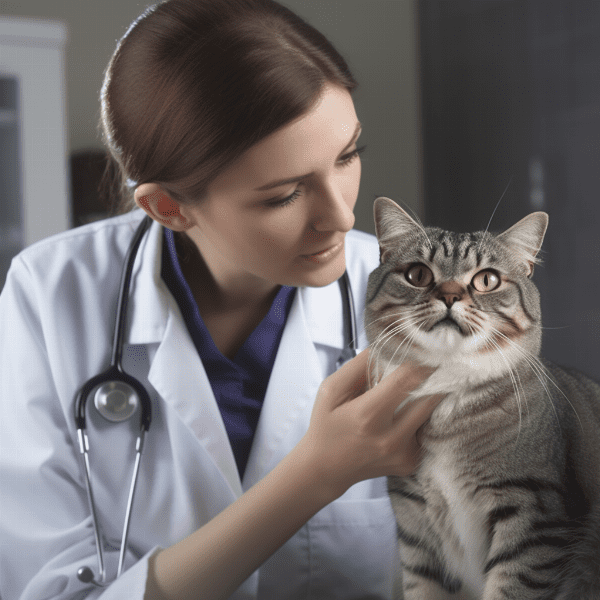
Tips for Maintaining Your Cat’s Dental Health
In addition to regular tooth brushing, there are several other steps you can take to help maintain your cat’s dental health over the long term.
Schedule Regular Dental Exams
Schedule regular dental exams with your veterinarian to ensure that your cat’s teeth and gums are healthy. Your veterinarian may recommend professional cleaning or treatment if any dental issues are identified.
Provide Dental-Friendly Foods and Treats
Look for dental-friendly foods and treats that can help promote your cat’s dental health. These may include dental chews or treats that help scrub away plaque and tartar.
Use Water Additives or Oral Gels
Consider using water additives or oral gels that can help prevent tartar buildup and promote overall dental health. Be sure to choose products that are specifically formulated for cats, and follow the instructions carefully.
Monitor Your Cat’s Behavior and Health
Keep an eye on your cat’s behavior and health, and watch for signs of dental problems, such as bad breath, difficulty eating, or loose teeth. Consult with your veterinarian if you notice any issues.
Maintain a Consistent Routine
Finally, maintain a consistent dental care routine for your cat. Incorporate regular tooth brushing, dental-friendly foods and treats, and regular veterinary exams to help ensure that your cat’s teeth and gums stay healthy and strong.
By following these tips and techniques, you can help promote your cat’s dental health and prevent dental problems over the long term.
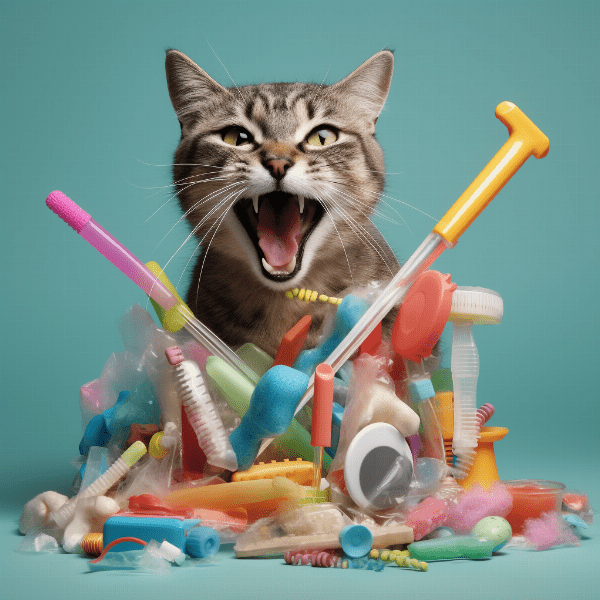
When to See a Veterinarian
While regular dental care can help prevent many dental issues, there may be times when it’s necessary to seek professional veterinary care. Here are some signs that you should consult with your veterinarian about your cat’s dental health:
Persistent Bad Breath
If your cat has persistent bad breath, it may be a sign of dental issues, such as gum disease or tooth decay. Consult with your veterinarian to rule out any underlying issues.
Difficulty Eating
If your cat is having difficulty eating, it may be a sign of dental problems, such as loose teeth or gum disease. Your veterinarian can perform a dental exam to determine the cause of the issue.
Loose or Missing Teeth
If your cat has loose or missing teeth, it’s important to seek veterinary care as soon as possible. Loose teeth may be a sign of advanced dental disease, and missing teeth can cause a range of health issues.
Red or Swollen Gums
Red or swollen gums may be a sign of gingivitis or other forms of gum disease. Your veterinarian can perform a dental exam and recommend treatment options.
Other Health Issues
In some cases, dental problems can lead to systemic health issues, such as heart or kidney disease. If you notice any changes in your cat’s overall health or behavior, consult with your veterinarian.
Remember, regular dental care and veterinary checkups are crucial for maintaining your cat’s dental health and overall wellness. By staying vigilant and seeking veterinary care as needed, you can help keep your furry friend healthy and happy for years to come.

Conclusion: Happy and Healthy Smiles for Your Feline Friend
Congratulations! You’ve now learned everything you need to know to help keep your cat’s teeth and gums healthy. By following the tips and techniques outlined in this guide, you can help prevent dental issues and promote overall wellness for your furry friend.
Remember to maintain a consistent dental care routine, schedule regular veterinary exams, and seek professional veterinary care as needed. With patience, practice, and plenty of love and attention, you can help ensure that your cat enjoys a happy and healthy smile for years to come.
Thank you for reading, and happy brushing!
